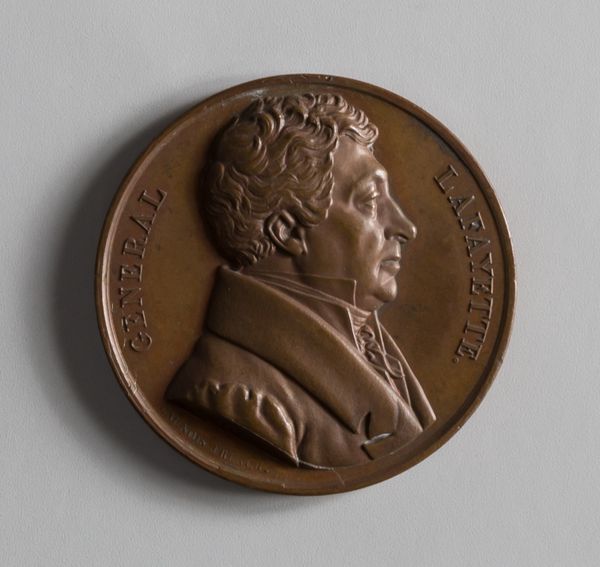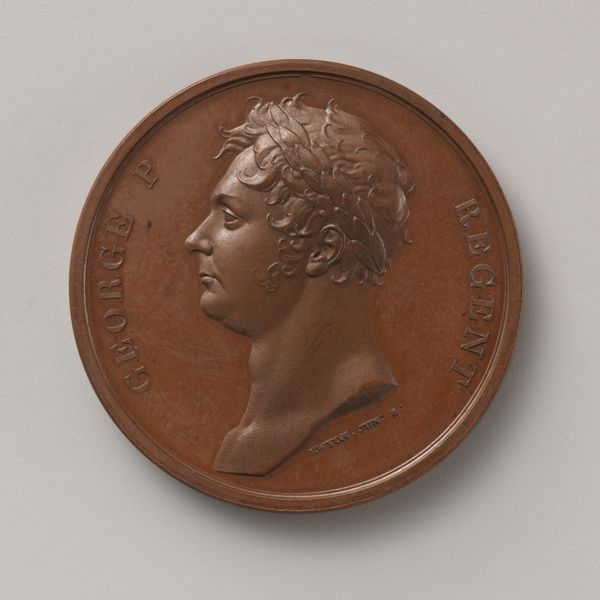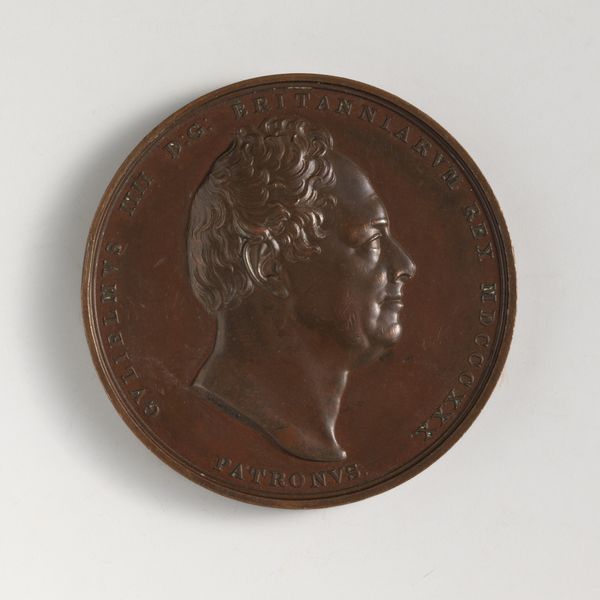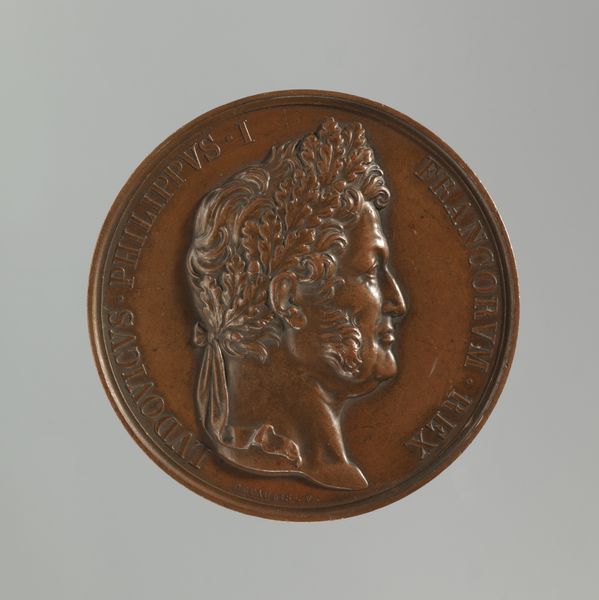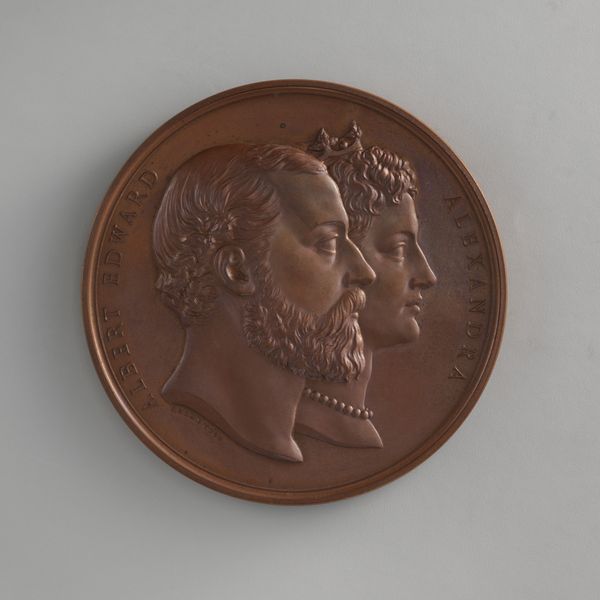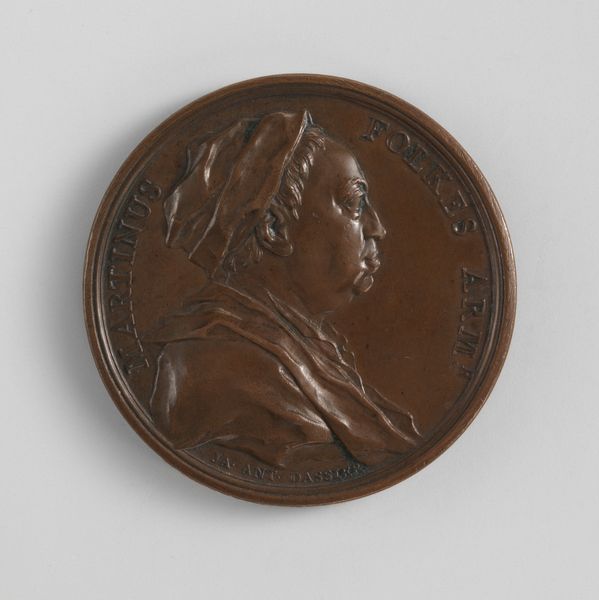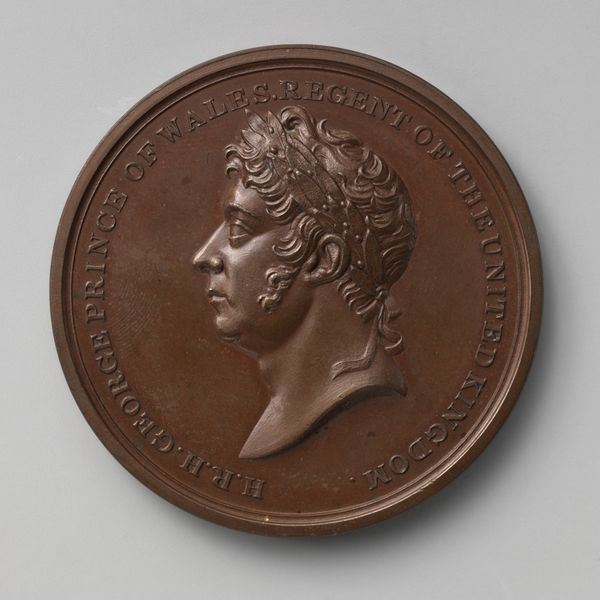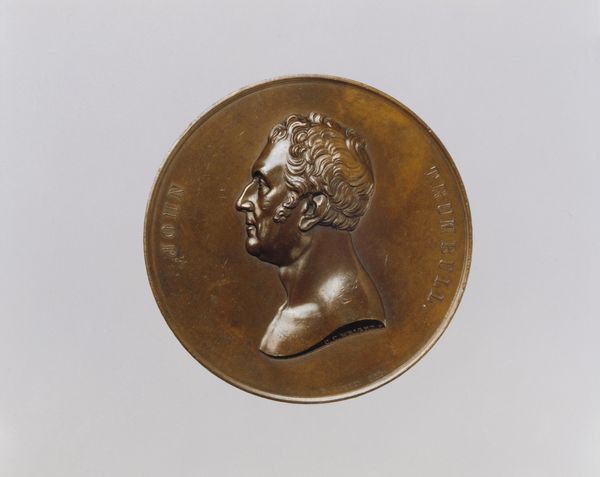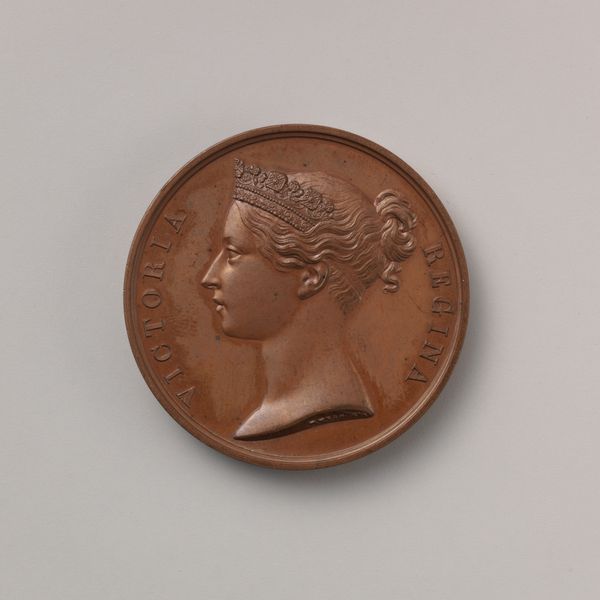
metal, sculpture
#
portrait
#
medal
#
neoclacissism
#
metal
#
sculpture
#
sculpture
#
decorative-art
Dimensions: Diameter (confirmed): 2 1/4 in. (5.7 cm)
Copyright: Public Domain
Curator: Look at the expression, that's what hits you first, right? Melancholy, maybe a touch of world-weariness in those eyes. And the curls! Editor: It is striking, that contemplative gaze set within such precise lines. We are looking at a bronze portrait medal of Firmin Didot, crafted sometime between 1830 and 1840 by Jean-Jacques Barre. Curator: A medal, huh? Makes him seem like a prize. A blue ribbon intellect. But really, there is such vulnerability despite the… metallic presentation. What do you think, metal as a material... does it add some level of stoicism, even a bit of patriarchal... rigidity? Editor: It absolutely signifies status, Curator, yet it is not impermeable. Think about it this way, in Neoclassical society, these kinds of medals would have functioned as important signifiers of elite male identity and achievement. It's crucial to acknowledge the implicit power dynamics at play here. Curator: Oh, totally, totally. The elite men getting frozen in time in bronze... sounds a bit spooky if you ask me. Does the use of bronze, especially within this era, contribute to a certain idealized notion of masculinity, removing some human characteristics in favor of power and control? Editor: Without a doubt. The cool objectivity conveyed by the metal complements the stoic, rational image prized by the Enlightenment, Firmin Didot himself played a role as a renowned printer, punch-cutter, and typefounder, a real force behind shaping typography as a tool of governance, commerce, and knowledge dissemination in that time period. Curator: Shaping typography... Wow. I like to think about who touched the thing. Who was allowed to see it, did it sit in a private study? Now it sits in the Met...it’s lost some of its intensity… almost diluted… Editor: Yet accessible, thankfully. Seeing a work like this reminds us of the long legacies, of both art and political power, intertwined in our cultural institutions. It serves to show how we can learn about the society this artwork embodies. Curator: Totally, even something solid and seemingly "finished" as a bronze medal has to become like, mutable. History, man, keeps messing with everything. Even this little round bronze face. Editor: Absolutely, because its value and narrative is constantly updated and shifted, based on contemporary interpretation.
Comments
No comments
Be the first to comment and join the conversation on the ultimate creative platform.

